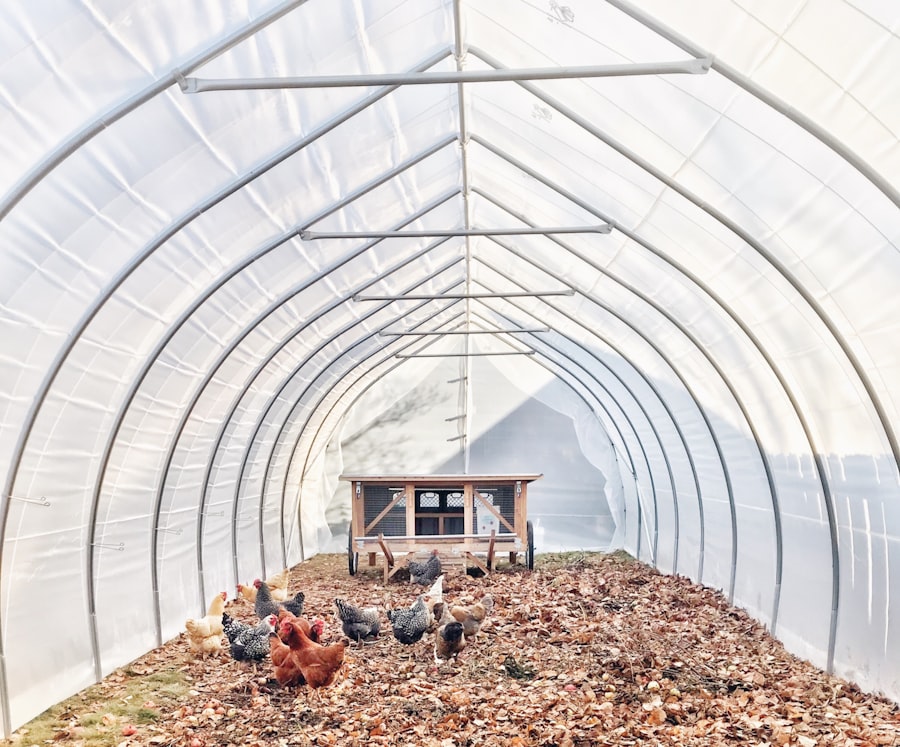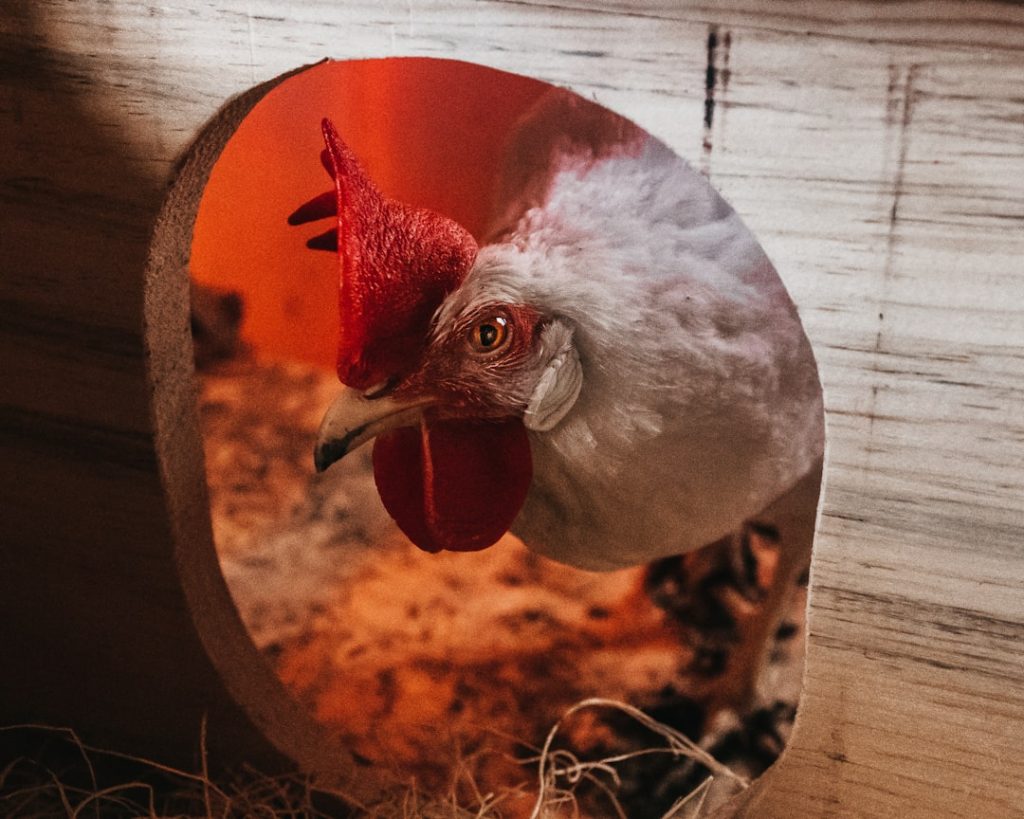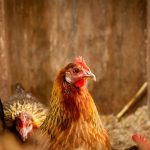Rats pose a significant challenge for chicken coop owners. These rodents can create numerous problems, including the theft of chicken feed and the transmission of diseases. To effectively manage rat infestations and maintain the health of poultry flocks, it is crucial to understand rat behavior and the factors that draw them to chicken coops.
This article examines rat behavior patterns, identifies the elements that make chicken coops attractive to rats, discusses preventive measures to deter rat infestations, emphasizes the importance of regular coop maintenance, and outlines the potential health hazards associated with rat presence in chicken coops. By addressing these topics, poultry keepers can develop effective strategies to protect their flocks and maintain a hygienic environment for their chickens.
Table of Contents
- 1 Understanding the behavior of rats
- 2 Factors that attract rats to chicken coops
- 3 Ways to prevent rats from being attracted to chicken coops
- 4 The importance of proper coop maintenance
- 5 The potential health risks associated with rats in chicken coops
- 6 Conclusion and final thoughts
- 7 FAQs
- 7.1 What are the potential reasons for rats being attracted to chicken coops?
- 7.2 How can chicken owners prevent rats from being attracted to their coops?
- 7.3 Are there any specific coop designs or practices that can help deter rats?
- 7.4 Can keeping chickens attract rats in urban areas as well?
- 7.5 What are the potential health risks associated with rats in chicken coops?
Key Takeaways
- Rats are a common problem in chicken coops and can pose health risks to both the chickens and their owners.
- Rats are attracted to chicken coops due to the availability of food, water, and shelter.
- Factors such as spilled feed, unsecured coop doors, and clutter around the coop can attract rats.
- Preventing rats from being attracted to chicken coops can be achieved through proper food storage, coop maintenance, and regular cleaning.
- Proper coop maintenance is crucial in preventing rat infestations and ensuring the health and safety of the chickens and their owners.
Understanding the behavior of rats
Behavior and Habitat
Rats are nocturnal animals, meaning they are most active at night, which can make them difficult to spot. They are also highly intelligent and resourceful, making them adept at finding food sources and shelter.
Reproduction and Infestation
They are prolific breeders, with a single female rat capable of producing up to 12 litters of 6-8 pups each year. This rapid reproduction rate can quickly lead to a rat infestation if not properly managed. Rats are also known to be excellent climbers and can squeeze through small openings, making it easy for them to gain access to chicken coops.
Diet and Disease
Rats are opportunistic feeders, meaning they will eat just about anything they can find. This includes chicken feed, eggs, and even young chicks. Their ability to consume large quantities of food in a short amount of time can lead to significant financial losses for chicken coop owners. Additionally, rats are carriers of various diseases, including salmonella, leptospirosis, and hantavirus, which can pose a serious health risk to both chickens and humans. Understanding the behavior of rats is crucial in developing effective strategies for preventing infestations in chicken coops.
Factors that attract rats to chicken coops

There are several factors that can attract rats to chicken coops. One of the primary attractions for rats is the availability of food. Chicken feed, in particular, is a highly desirable food source for rats.
Additionally, spilled feed and food scraps left in the coop can also attract rats. Rats are also attracted to the warmth and shelter provided by chicken coops, especially during colder months. Coops that are not properly maintained and have areas of clutter or debris can provide hiding spots for rats, making them feel safe and secure.
Another factor that can attract rats to chicken coops is the presence of water sources. Rats require access to water for drinking and grooming, and chicken coops that have leaky waterers or standing water can provide an attractive habitat for rats. Additionally, poorly constructed coops with gaps or holes in the walls or flooring can provide easy access for rats to enter and exit the coop at will.
Understanding these factors that attract rats to chicken coops is essential in developing effective strategies for preventing infestations.
Ways to prevent rats from being attracted to chicken coops
There are several strategies that chicken coop owners can employ to prevent rats from being attracted to their coops. One of the most important steps is to ensure that all feed is stored in secure containers that rats cannot access. This includes both bagged feed and any feed stored in bulk containers.
Additionally, it is important to clean up any spilled feed or food scraps promptly to remove potential food sources for rats. Regularly cleaning and maintaining the coop can also help prevent rats from being attracted to the area. Proper coop maintenance is essential in preventing rats from being attracted to chicken coops.
This includes repairing any holes or gaps in the walls or flooring that could provide entry points for rats. It is also important to keep the coop free of clutter and debris, as these can provide hiding spots for rats. Ensuring that water sources are properly maintained and do not leak can also help prevent rats from being attracted to the coop.
Employing these strategies can help reduce the likelihood of rat infestations in chicken coops.
The importance of proper coop maintenance
Proper coop maintenance is crucial in preventing rat infestations in chicken coops. Regularly cleaning and tidying the coop can help remove potential hiding spots and food sources for rats. This includes removing any clutter or debris from the coop and ensuring that spilled feed and food scraps are promptly cleaned up.
Additionally, regularly inspecting the coop for any holes or gaps in the walls or flooring and repairing them promptly can help prevent rats from gaining access to the coop. Properly storing feed in secure containers and ensuring that water sources are properly maintained can also help prevent rats from being attracted to chicken coops. Regularly cleaning and maintaining feeders and waterers can help prevent spills and leaks that could attract rats.
Proper coop maintenance is essential in creating an environment that is less attractive to rats and reducing the likelihood of infestations.
The potential health risks associated with rats in chicken coops

Disease Transmission and Financial Losses
Rats are carriers of various diseases, including salmonella, leptospirosis, and hantavirus, which can be transmitted to chickens through direct contact or contaminated food and water sources. These diseases can cause illness and even death in chickens, leading to significant financial losses for chicken coop owners.
Health Risks to Humans
Rats can also pose a health risk to humans through direct contact or exposure to contaminated surfaces. In addition to spreading disease, rats can also cause damage to chicken coops and equipment, leading to potential fire hazards and structural damage.
Impact on Productivity and Profitability
Rats may also steal eggs and kill young chicks, further impacting the productivity and profitability of the flock. Understanding the potential health risks associated with rats in chicken coops is essential in developing effective strategies for preventing infestations and keeping both chickens and humans healthy.
Conclusion and final thoughts
In conclusion, understanding the behavior of rats and what attracts them to chicken coops is essential in preventing infestations and maintaining a healthy flock. Proper coop maintenance, including storing feed in secure containers, regularly cleaning and tidying the coop, and ensuring that water sources are properly maintained, can help prevent rats from being attracted to chicken coops. The potential health risks associated with rats in chicken coops highlight the importance of taking proactive measures to prevent infestations and keep both chickens and humans healthy.
By employing these strategies, chicken coop owners can create an environment that is less attractive to rats and reduce the likelihood of infestations.
If you’re concerned about whether keeping chickens will attract rats, you may want to check out this article on The Chicken Coop Country Diner. It provides tips on how to keep your chicken coop clean and free from pests, including rats.
FAQs
What are the potential reasons for rats being attracted to chicken coops?
Rats are attracted to chicken coops because they provide a food source in the form of chicken feed, eggs, and even young chicks. Additionally, the bedding and nesting materials in the coop can provide a comfortable habitat for rats.
How can chicken owners prevent rats from being attracted to their coops?
Chicken owners can prevent rats from being attracted to their coops by ensuring that feed is stored in secure, rodent-proof containers, keeping the coop clean and free of spilled feed, and regularly removing eggs to prevent them from becoming a food source for rats.
Are there any specific coop designs or practices that can help deter rats?
Yes, there are coop designs and practices that can help deter rats, such as elevating the coop off the ground, using hardware cloth to secure openings and prevent rats from entering, and keeping the area around the coop free of clutter and debris that can provide hiding spots for rats.
Can keeping chickens attract rats in urban areas as well?
Yes, keeping chickens can attract rats in urban areas as well, especially if proper precautions are not taken to secure feed and keep the coop clean. Rats are opportunistic and will seek out food sources wherever they can find them.
What are the potential health risks associated with rats in chicken coops?
Rats in chicken coops can pose health risks to both the chickens and their owners. Rats can carry diseases such as salmonella and leptospirosis, which can be transmitted to chickens and humans. Additionally, rats can contaminate feed and water sources with their droppings, further increasing the risk of disease transmission.
Meet Walter, the feathered-friend fanatic of Florida! Nestled in the sunshine state, Walter struts through life with his feathered companions, clucking his way to happiness. With a coop that’s fancier than a five-star hotel, he’s the Don Juan of the chicken world. When he’s not teaching his hens to do the cha-cha, you’ll find him in a heated debate with his prized rooster, Sir Clucks-a-Lot. Walter’s poultry passion is no yolk; he’s the sunny-side-up guy you never knew you needed in your flock of friends!







